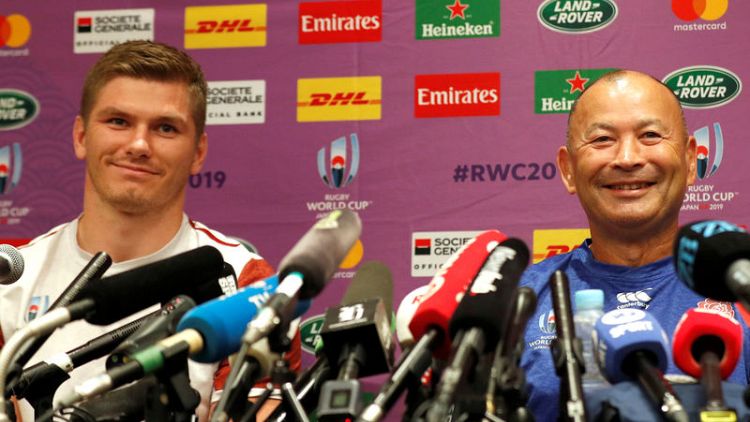By Mitch Phillips and Greg Stutchbury
TOKYO (Reuters) - Expected tactics of England and New Zealand ahead of Saturday's Rugby World Cup semi-final at Yokohama International Stadium:
ENGLAND
England's tactics have evolved continually under Eddie Jones but radically so since the return to the team of Manu Tuilagi.
The centre spent most of the first three years of Jones's tenure unavailable through injury but when he finally got a sustained run in the side in the Six Nations, the Australian realised he had a weapon to build a team around.
Jones has moved him to outside centre on Saturday after opting to return to the George Ford/Owen Farrell 10-12 combination. He will charging on to their popped passes or draw in defenders as a dummy, opening the way for the delayed, pull-back passes for another runner to come on to late and fly through the hole, that Farrell, in particular, loves.
With a high-paced and classy back three of Jonny May, Anthony Watson and Elliot Daly, it is as an exciting a backline as England have boasted for years and with Henry Slade on the bench, Jones is likely to switch Farrell to flyhalf and beef up the midfield during the second half.
Up front, the presence of Vunipola brothers Mako and Billy is huge. Billy's ball-carrying from number eight is very difficult to stop, and because of it, Jones feels able to field twin opensides Tom Curry and Sam Underhill, both athletic and powerful breakdown specialists who were defensive animals against Australia.
England's traditional set-piece strength looks as good as ever, thought were roasted in the lineout by the All Blacks a year ago - losing five of their own throws - something they cannot afford to repeat on Saturday.
NEW ZEALAND
Coach Steve Hansen has continually tweaked how his side have played in the eight years he has been in charge but none more so in the two since the British and Irish Lions defensive line forced them to rethink how they approach their attacking game.
With defenders pressing up and in on the midfield, the All Blacks found it hard to get the ball wide quickly and put their outside players into space.
The introduction of dual playmakers over the last 18 months has started to find its feet at the World Cup with Richie Mo'unga at flyhalf and Beauden Barrett at fullback.
Much of the All Blacks' play will again be generated by the player in the flyhalf position, whether that is Mo'unga or Barrett, with the game plan allowing either to step in depending on what they are seeing at the time.
This can create confusion and hesitation in opposition defences, while with Barrett revelling in the extra space at fullback and willing to launch a counter-attack it also puts them in two minds as to when, and whether, to kick deep.
Mo'unga, however, also has no qualms about bringing in wingers Sevu Reece and George Bridge on the counter, with the duo often popping up all over the field. Bridge runs superb lines to get outside the midfield defenders.
As they showed against Ireland New Zealand's often overlooked forwards also have the physicality to dominate opposition packs.
The decision to abandon the twin openside flankers Ardie Savea and Sam Cane and select lock Scott Barrett at blindside will also put pressure on England's lineout and add more bulk to the collision zones.
(Editing by Ed Osmond)


